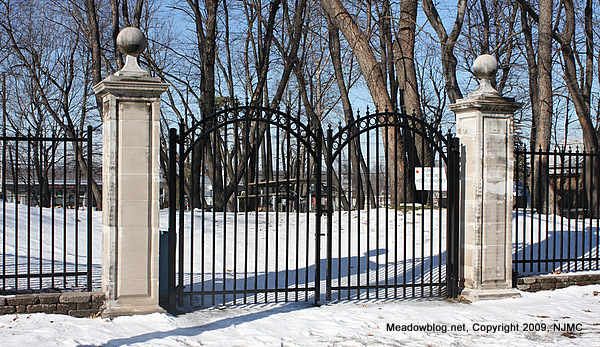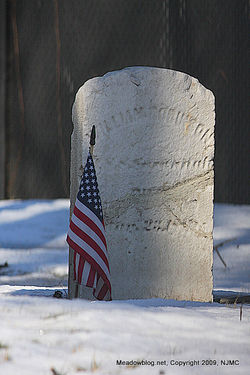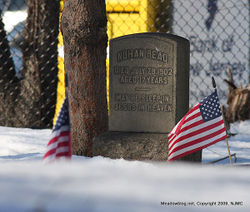 The Meadowlands Commission is honoring Black History Month with a weekly post on this blog. Today the topic is Gethsemane Cemetery in Little Ferry.
The Meadowlands Commission is honoring Black History Month with a weekly post on this blog. Today the topic is Gethsemane Cemetery in Little Ferry.
Gethsemane Cemetery is located on an acre on a sandy hill just off Route 46 and Liberty Street. The photo above is a view of the cemetery's entrance on Summit Place.
 It was set aside in 1860 as a burial ground for African-American residents of nearby Hackensack. The last burial took place in 1924.
It was set aside in 1860 as a burial ground for African-American residents of nearby Hackensack. The last burial took place in 1924.
The site was entered onto the National Register of Historic Places in 1994 "because of the significant role it played in the enactment of New Jersey’s early civil rights legislation, as well as containing evidence of West African burial customs," according to the Bergen County Division of Historical and Cultural Affairs.
The county has been doing a major restoration of the cemetery, and it is currently closed to the public. Self-guided tours will be available when the work is completed.
According to the agency, "Fewer than 50 gravestones remain, but the burials of more than 500 people have been documented. 
"They include Elizabeth Sutliff Dulfer who was born a slave in the late 1700s, freed in 1822, and died in 1880. She was one of the area's wealthiest businesswomen and landholders. [Dulfer owned clay beds that supplied clay to potteries from Philadelphia to Boston. Her clay company along the Hackensack River was said to be the second-largest in the nation.]
"Two Civil War veterans, Peter Billings and Silas M. Carpenter, were also buried here."
More on the cemetery here.
Click "Continue reading …" to learn more about the cemetery's role in early civil-rights legislation.
According to Bergen County government, "In 1884, Samuel Bass, originally from Philadelphia, and a highly respected Sexton in Hackensack's First Baptist Church, die d.
d.
"His church wished to bury him in the local all-white Hackensack Cemetery, but was denied permission. His family then buried him in Gethsemane Cemetery. The controversy was reported in the African American, local and New York City press.
"New Jersey's Governor Leon Abbett protested the denial, and sent a strong statement to the State Legislature. As a result, state legislation prohibiting cemeteries from discrimination, which was known as the 'Negro Burial Bill,' was passed in March 1884.
"Bass's family later removed his remains to Philadelphia."
